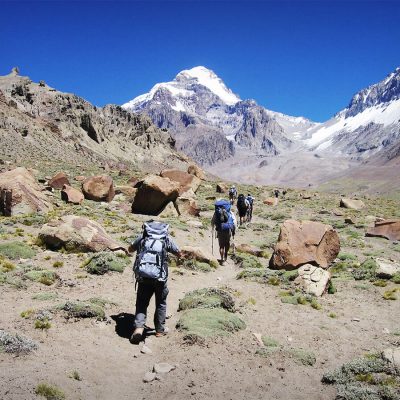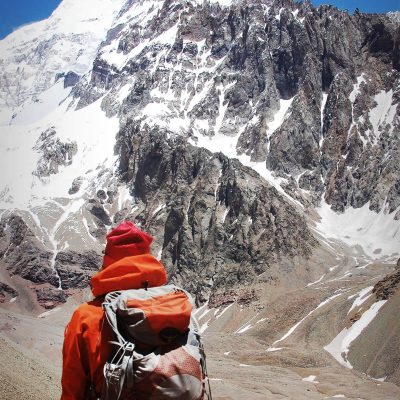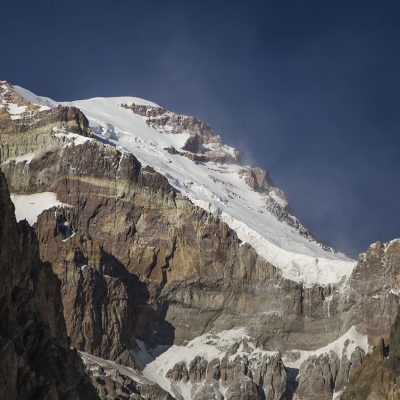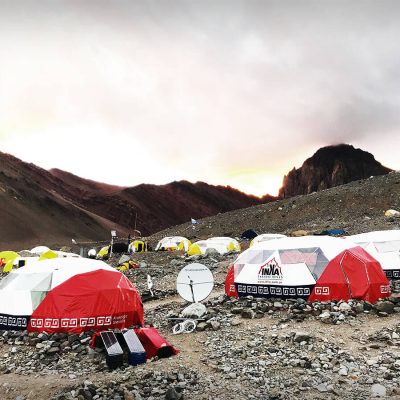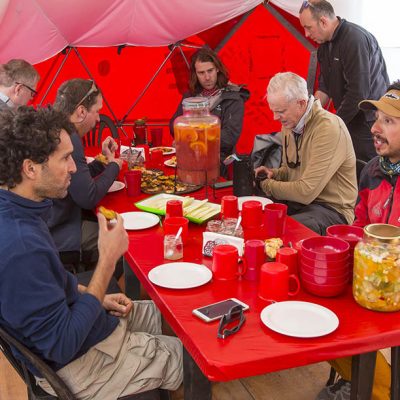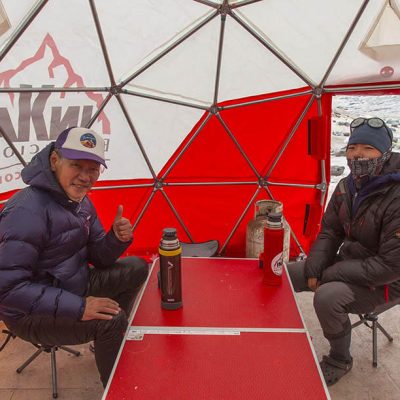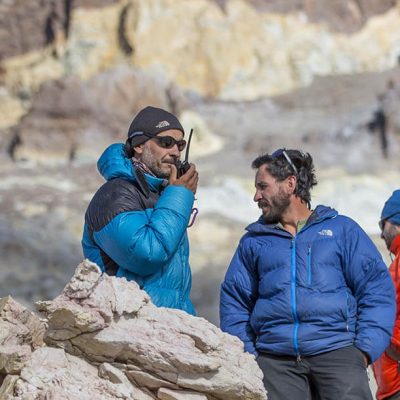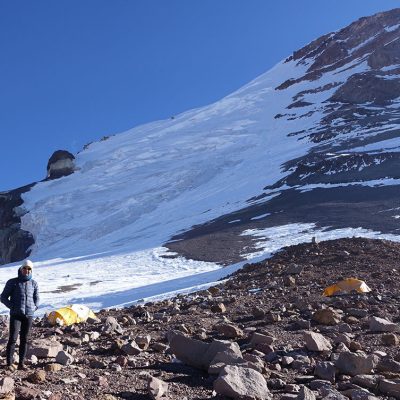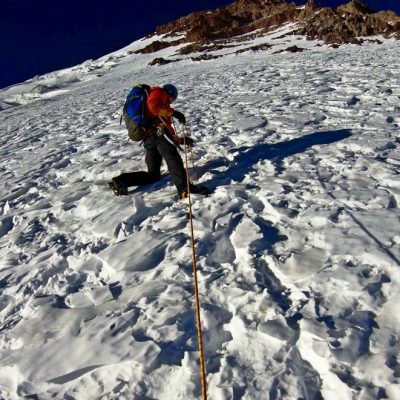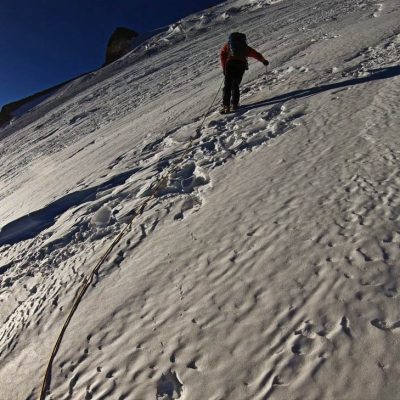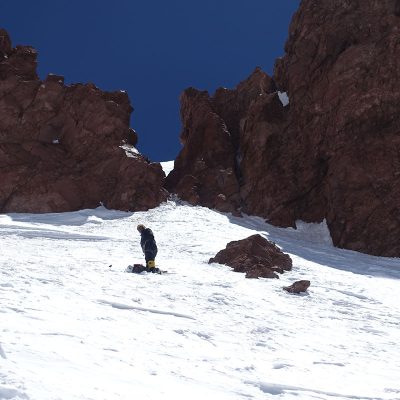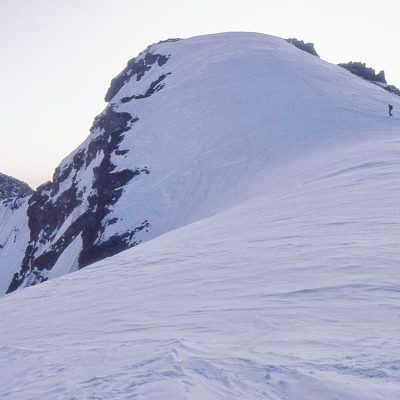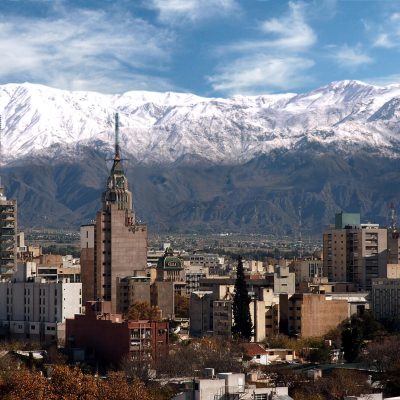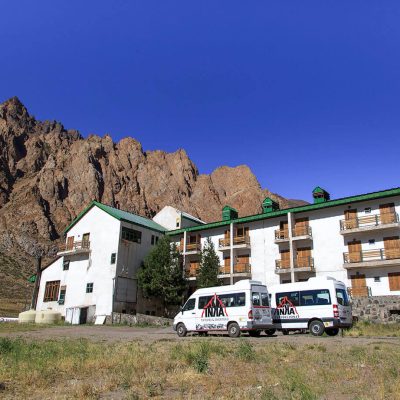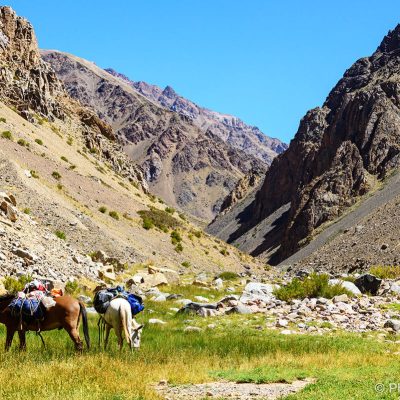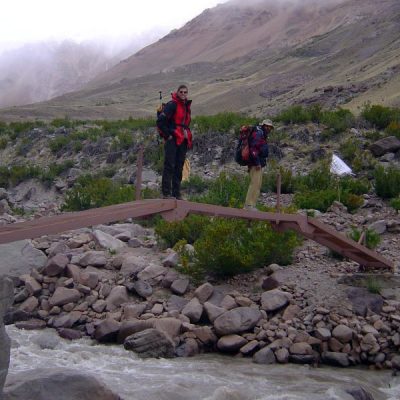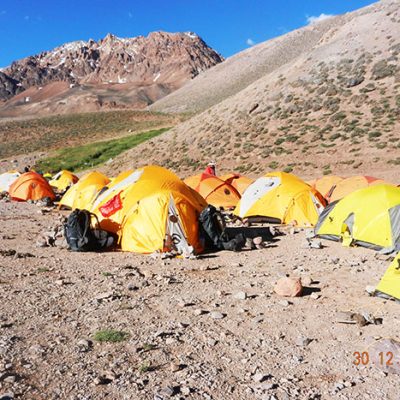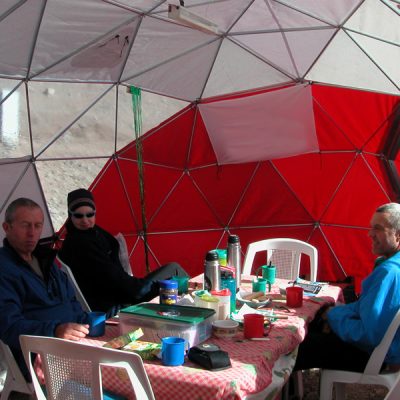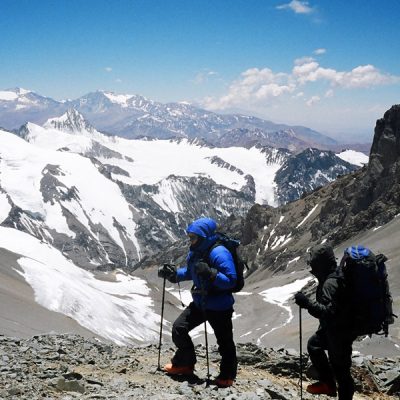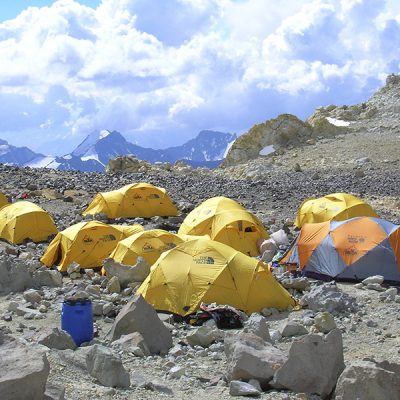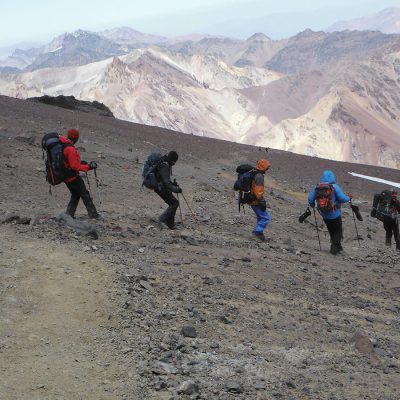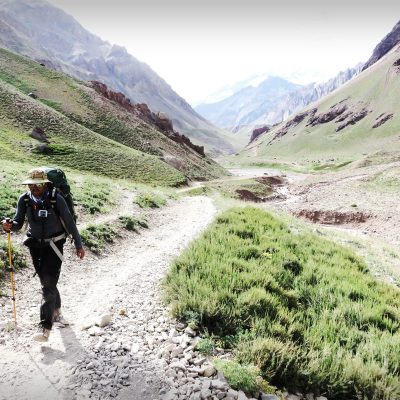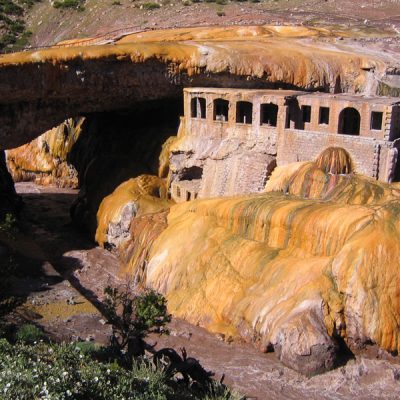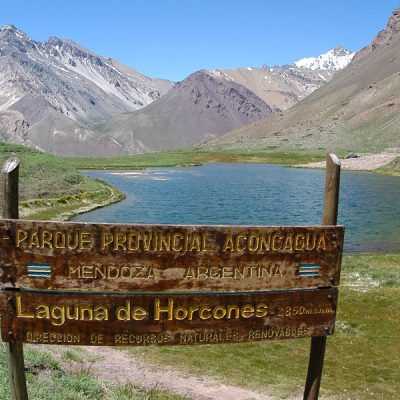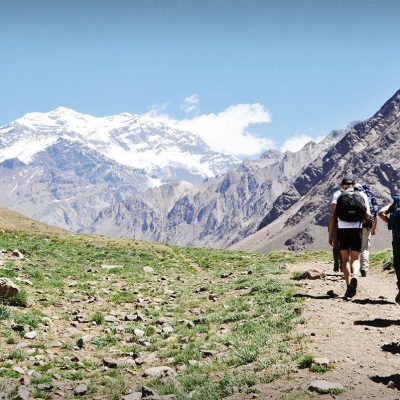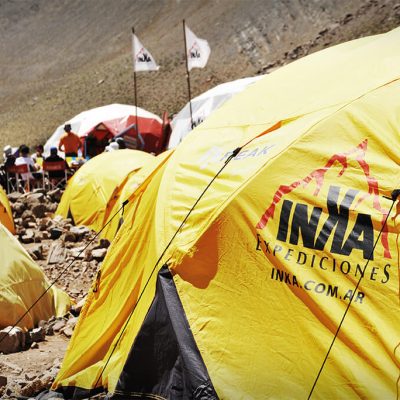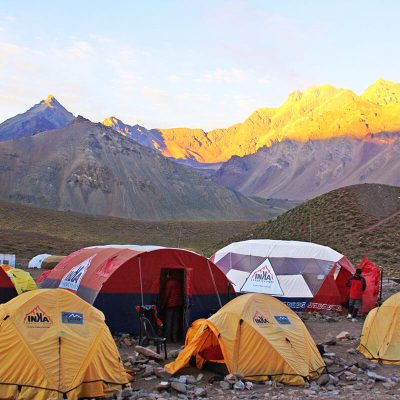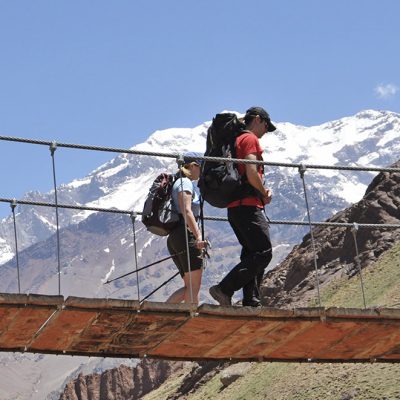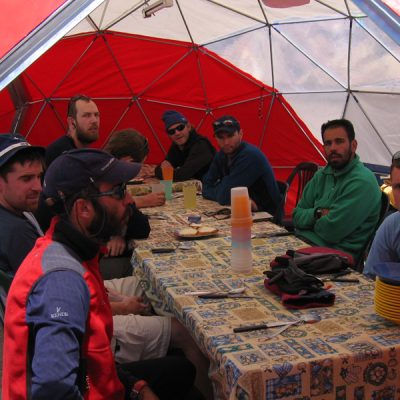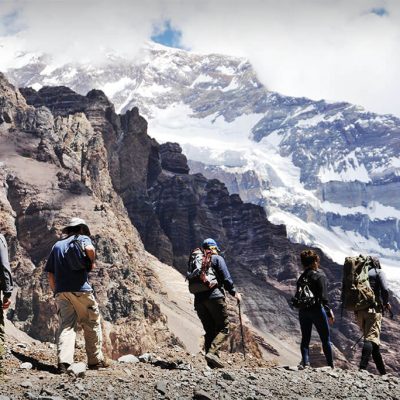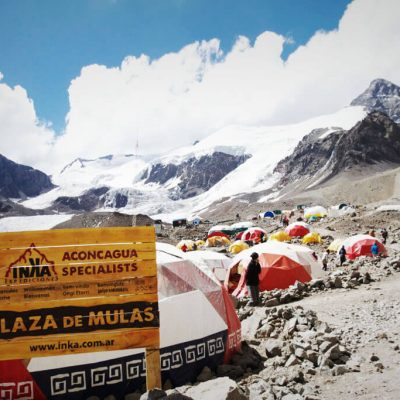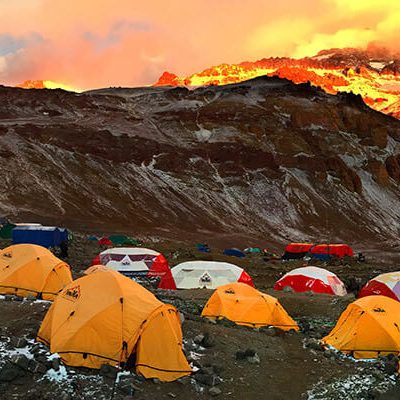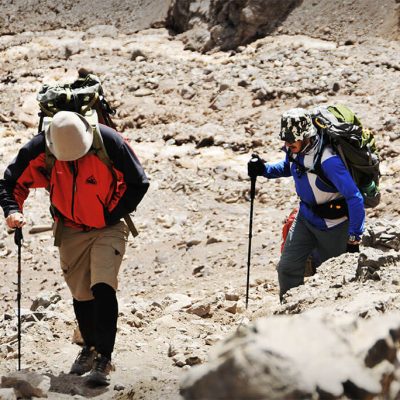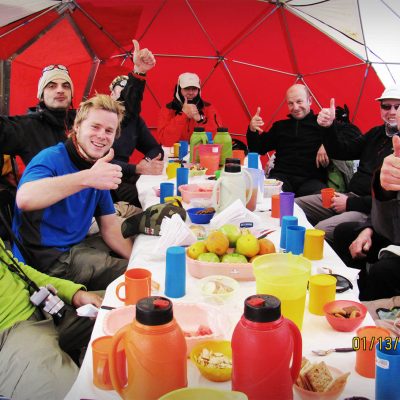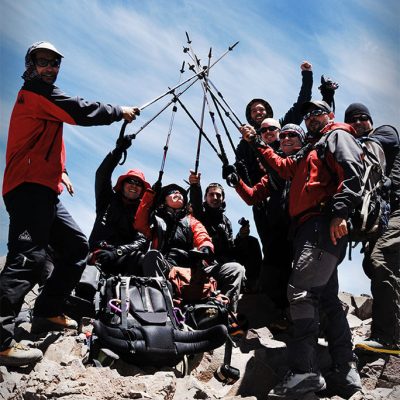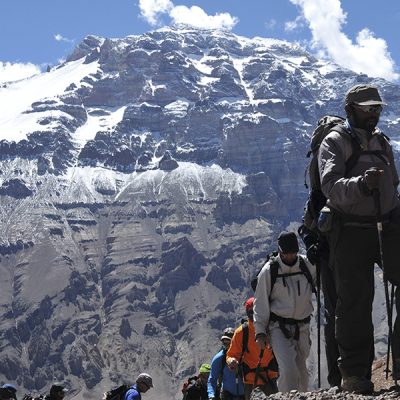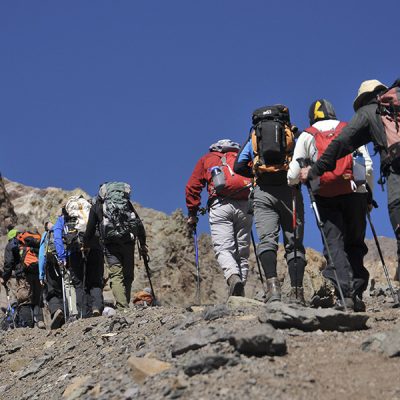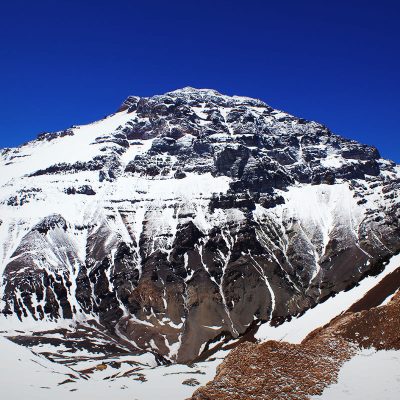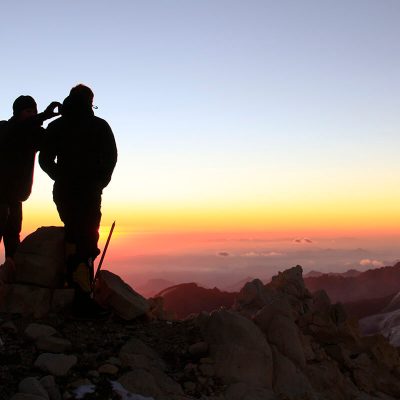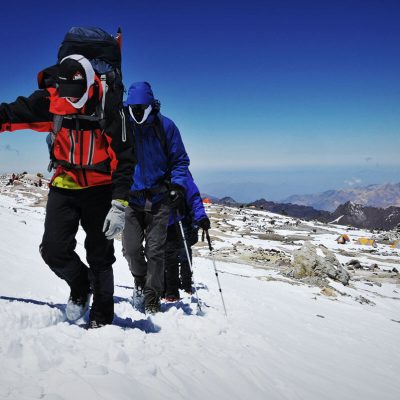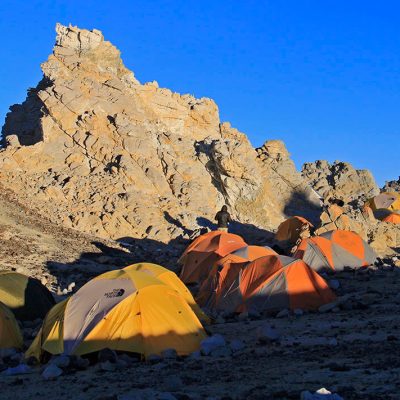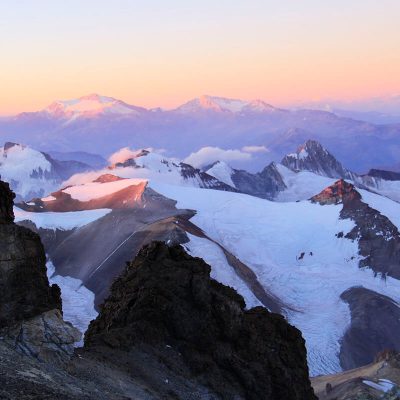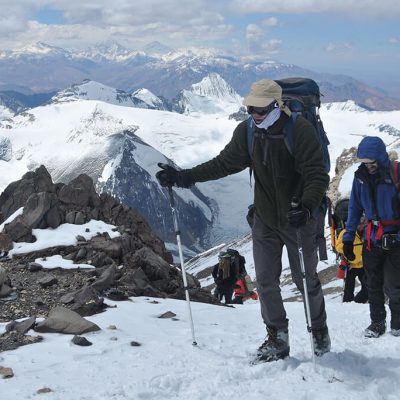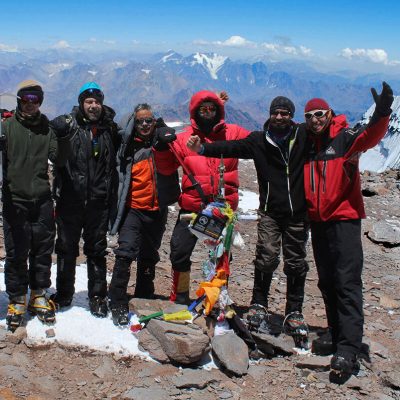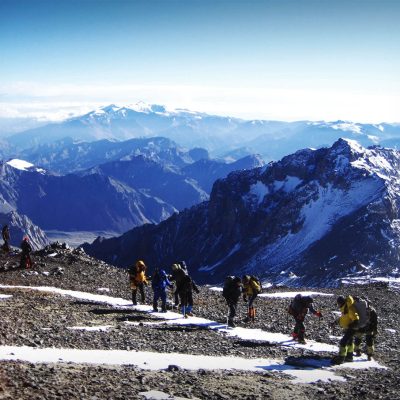FROM THE SECTION:
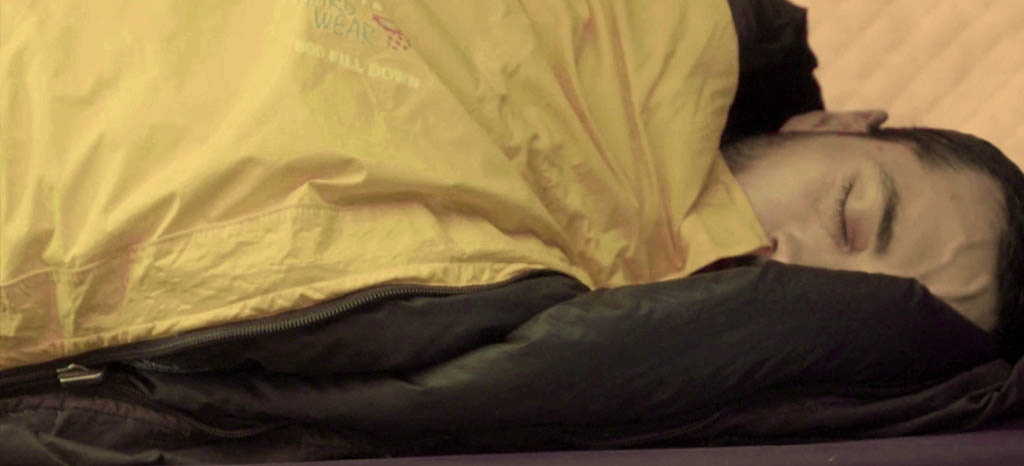
The outer fabric of the sleeping bag
Construction
Parts of the sleeping bag:
- Hood: It must fit the head to minimize air leakage, is best if it fits over the face to retain the hot air.
- Side flaps: Side tubes inside the sleeping bags at the end of the zipper are another important piece because, if there are points where the warm air can escape, we can then become cold. It is important that they have directional draft tubing to eliminate zip draft.
- Zippers. – They must be double action which will regulate the temperature by opening a little bit at the bottom. If they have any type of lock it will make it difficult to leave the bag in case of emergency. A Velcro closure on the part near the face is effective as it prevents unintentional opening.
- Base. – A broad base will allow us to sleep with thick socks/inner boots.
Mummy Sleeping Bags
TEMPERATURES
- Maximum temperature: is the maximum temperature at which a medium size male (80kg) can spend a night in comfortable conditions without sweating.
- Comfort temperature: is the temperature level at which a medium size woman (60kg) can spend a night in comfortable conditions.
- Temperature limit: indicates the minimum temperature limit in which a medium size male (80 kg) can spend a night in comfortable conditions.
- Extreme temperature: corresponds to the temperature level at which a medium size woman (60kg) can spend a night without physical damage.
- The metabolism of each person is an important factor. A thin person will need a warmer sleeping bag than a person with more fat or or muscle.
- The diet
- The physical condition e.g. exhaustion
- The clothes you sleep in
- The altitude
- The outside temperature
- The humidity
- The wind, even the slightest gust of wind can contribute to heat loss
- The tent insulation
Moisture or perspiration evaporates and produces the sensation of cold. Wearing breathable clothing is the best option to prevent this factor.
The body radiates heat outwards when surrounded by a cold environment, this is reduced with a layer of trapped dead air around the body to keep the user warm and reduce body heat loss.
Basically we talk about heat exchange between two objects, the hottest transmits heat to the coldest. As the ground is always the colder we will convey our heat to it, this is solved with a good insulator.
The heated air usually disperses and is replaced by cold air, cooling us down again. This depends on the temperature and the speed with which the new air arrives. A good thermal collar in the sleeping bag or bivy prevent convection. In hotter situations convection can be very helpful because it produces coolness, this is when we appreciate having chosen a good sleeping because if we have a double zippered sleeping we can open it a bit to cool the feet.
Recommendation:
You must choose your sleeping bag based on the lowest temperature you expect to experience, which must match with the COMFORT TEMPERATURE thats marked by the manufacturer.
TIPS
- When the bag is not in use, you should leave it open and hanging. If you do not have the necessary space it can be kept in a bag. It must only be compacted during travel and for the least possible time.
- Always try to hydrate and eat before bedtime.
- Always use a good insulating mat under your sleeping bag. This provides the insulation under you and keeps you from the cold, moisture and dust on the floor.
- When storing your sleeping bag in the compression bag, it must not be twisted. Pack it in starting with the feet area first as this is best for the filling, this is also easier to do it this way in the mountains.
- When entering the inside the bag, try and be as dry as possible and also if possible enter after exercise as it will conserve some of the heat generated, otherwise it will take longer to heat the air in the bag.
- If you stay a few days in camp is recommended to dry the sleeping bag in the sun to remove the moisture produced by sweat.
